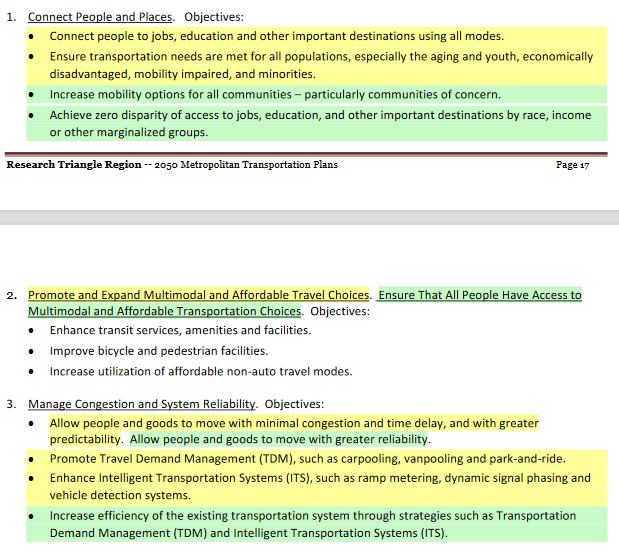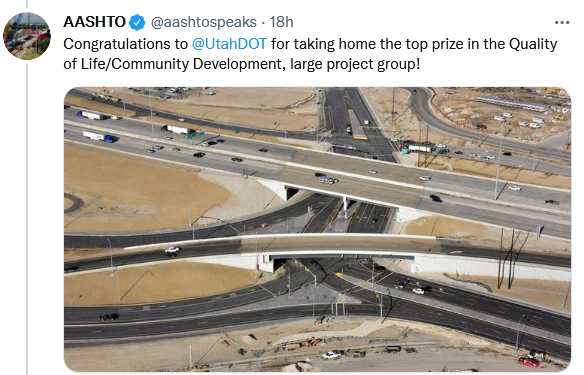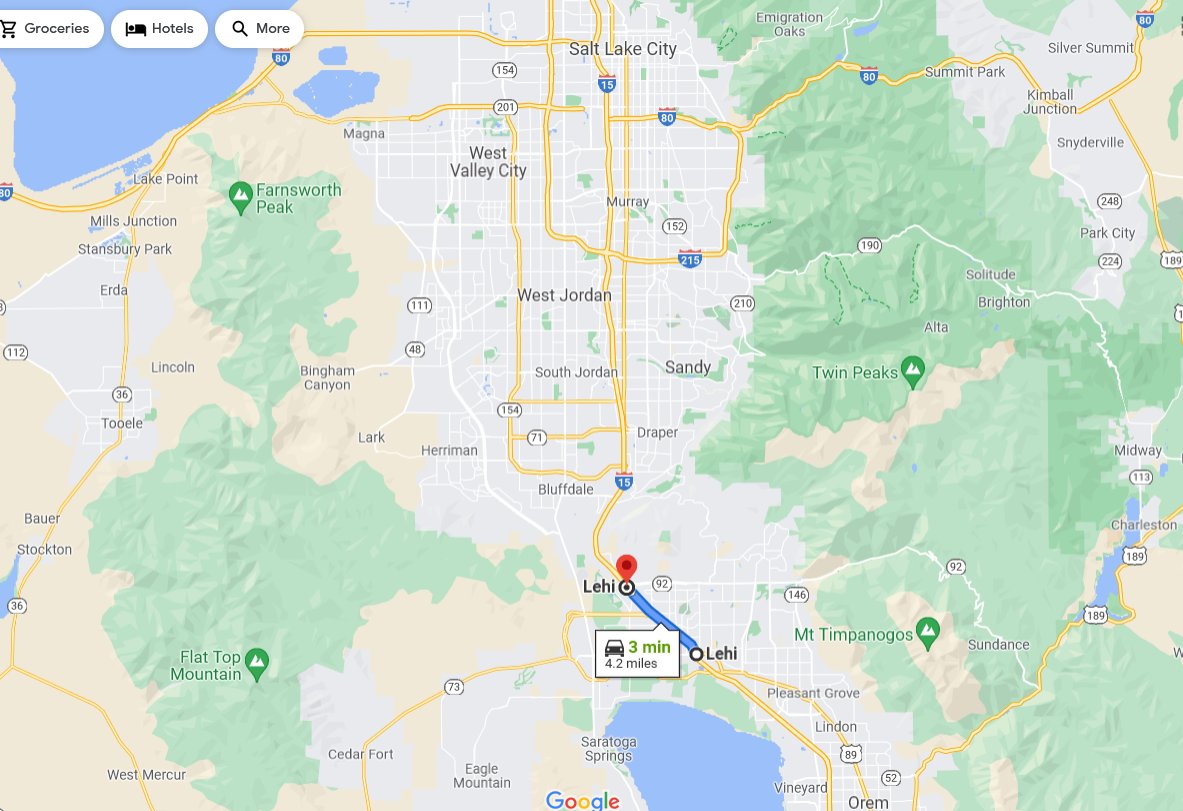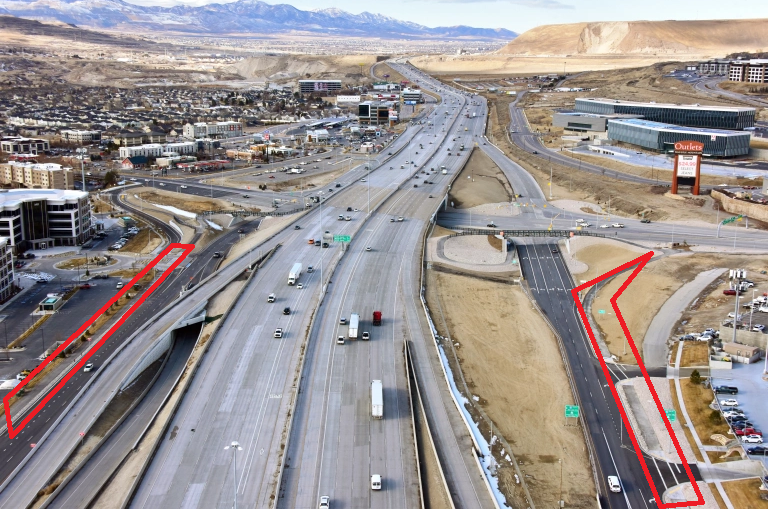
How to get URL link on X (Twitter) App



 2/ First, we need to understand the scale of this project. It's an absolute beast. 365 FEET OF ROW!! Yellow = mainlanes; Green = frontage roads; Light Blue = untolled managed lanes.
2/ First, we need to understand the scale of this project. It's an absolute beast. 365 FEET OF ROW!! Yellow = mainlanes; Green = frontage roads; Light Blue = untolled managed lanes. 


 2/ Welp, right off the bat we have a head-scratcher. "Not all state DOTs have the same ability to directly affect the reduction in GHGs..."
2/ Welp, right off the bat we have a head-scratcher. "Not all state DOTs have the same ability to directly affect the reduction in GHGs..." 





 2/ First, a bit of review. The monster I-45 expansion project would require the demolition of 1,079 housing units (of which 486 are public and/or low-income), 344 businesses, and 2 schools.
2/ First, a bit of review. The monster I-45 expansion project would require the demolition of 1,079 housing units (of which 486 are public and/or low-income), 344 businesses, and 2 schools. 

 2/ The scene depicted is vibrant and captures the energy and shared use of the public right-of-way that appeals to urban reformers. But this controlled chaos isn't how we present renewal models. It's a bit of a Jackson Pollack.
2/ The scene depicted is vibrant and captures the energy and shared use of the public right-of-way that appeals to urban reformers. But this controlled chaos isn't how we present renewal models. It's a bit of a Jackson Pollack. 

 2/ The case before the STB is about a plan for Amtrak to run two round trips each day between New Orleans (NOLA) and Mobile. The service would operate on CSX and NS railroad tracks (i.e., these Class I carriers are the host railroads).
2/ The case before the STB is about a plan for Amtrak to run two round trips each day between New Orleans (NOLA) and Mobile. The service would operate on CSX and NS railroad tracks (i.e., these Class I carriers are the host railroads). 

 2/ We need to start with some basics: (1) Flying cars will be an elite form of transportation; (2) they will not reduce surface congestion; and (3) they will deepen inequality and elite isolation as well as harm the environment. americanprogress.org/article/flying…
2/ We need to start with some basics: (1) Flying cars will be an elite form of transportation; (2) they will not reduce surface congestion; and (3) they will deepen inequality and elite isolation as well as harm the environment. americanprogress.org/article/flying…

 2/ According to the National Bridge Inventory database, the Fern Hollow bridge received a "Poor Condition" rating for its superstructure (i.e., the part that holds up the deck/roadway) in 2012. The slow decline of a bridge built in 1970 became critical 10 years ago.
2/ According to the National Bridge Inventory database, the Fern Hollow bridge received a "Poor Condition" rating for its superstructure (i.e., the part that holds up the deck/roadway) in 2012. The slow decline of a bridge built in 1970 became critical 10 years ago. 



 2/ Like many MPOs, Durham/DCHC has for years included progressive language & goals in its long-range plan. For instance, the 2050 plan places a heavy emphasis on affordable, safe, multimodal access as well as addressing climate change and health.
2/ Like many MPOs, Durham/DCHC has for years included progressive language & goals in its long-range plan. For instance, the 2050 plan places a heavy emphasis on affordable, safe, multimodal access as well as addressing climate change and health. 




 2/ When governors want to raise revenues to expand transportation facilities, they typically work with legislators to generate a list of projects that would be built with the money. Often, the cost of the list exceeds the expected revenue, but this is ignored to get the votes.
2/ When governors want to raise revenues to expand transportation facilities, they typically work with legislators to generate a list of projects that would be built with the money. Often, the cost of the list exceeds the expected revenue, but this is ignored to get the votes.


 2/ There is a lot to like about the plan and the state is clearly trying to break with traditional development forms. But I can't shake the phrase "not quite." The Point is not quite a city, not quite an office park, and not quite a suburban bedroom community.
2/ There is a lot to like about the plan and the state is clearly trying to break with traditional development forms. But I can't shake the phrase "not quite." The Point is not quite a city, not quite an office park, and not quite a suburban bedroom community. 




 2/ Important to understand that this widening and low-density sprawl isn't an unintended consequence but rather the goal of building beltways like SR 99/The Grand Parkway. This is the intended growth model. But it comes at a steep ecological price. Look at the current land use.
2/ Important to understand that this widening and low-density sprawl isn't an unintended consequence but rather the goal of building beltways like SR 99/The Grand Parkway. This is the intended growth model. But it comes at a steep ecological price. Look at the current land use. 



 2/ ArDOT estimates that in the absence of the $1B expansion, I-30 will have ominous congestion in 2045. Standard doom and gloom. In response, ArDOT defined the purpose of this project as highway expansion to meet this projected demand.
2/ ArDOT estimates that in the absence of the $1B expansion, I-30 will have ominous congestion in 2045. Standard doom and gloom. In response, ArDOT defined the purpose of this project as highway expansion to meet this projected demand. 


 2/ In 2002, TxDOT predicted that average daily traffic (ADT) on I-35 over Lady Bird Lake (red square on map) would hit 330,000 by 2020. In 2012, having hugely missed the mark, TxDOT revised this to 302,000 by 2035. (h/t @JackCraver)
2/ In 2002, TxDOT predicted that average daily traffic (ADT) on I-35 over Lady Bird Lake (red square on map) would hit 330,000 by 2020. In 2012, having hugely missed the mark, TxDOT revised this to 302,000 by 2035. (h/t @JackCraver)





 2/ The I-15 Technology Corridor project adds 2 lanes in each direction, changes frontage roads, and adds crossings. The "community" boast in the award relates to sidewalk & shared use path elements, which you can sort of pick out of the project photos.
2/ The I-15 Technology Corridor project adds 2 lanes in each direction, changes frontage roads, and adds crossings. The "community" boast in the award relates to sidewalk & shared use path elements, which you can sort of pick out of the project photos. 



 2/ Highway expansion has only three options: up, down, or out. Early on, TxDOT pitched a design that would have buried most of the expansion. The problem was cost. At $8 billion, TxDOT balked and went for two cheaper options that would expand outward.
2/ Highway expansion has only three options: up, down, or out. Early on, TxDOT pitched a design that would have buried most of the expansion. The problem was cost. At $8 billion, TxDOT balked and went for two cheaper options that would expand outward. 

 2/ TxDOT says the 184-mile Grand Parkway (SR 99) was "Conceptualized in the early 1960s," which is a reminder that once a highway planner puts lines on a map, they never die—even if they take decades to complete. Anyways, USDOT is giving this project a direct loan of up to $605M.
2/ TxDOT says the 184-mile Grand Parkway (SR 99) was "Conceptualized in the early 1960s," which is a reminder that once a highway planner puts lines on a map, they never die—even if they take decades to complete. Anyways, USDOT is giving this project a direct loan of up to $605M.


 2/ The deal transfers responsibility for some capex and O&M for 40 years to the Bayonne Water Joint Venture (initially United Water & investment firm KKR). This lousy deal is shot full of holes. I'll focus mostly on water rates and the lack of risk transference.
2/ The deal transfers responsibility for some capex and O&M for 40 years to the Bayonne Water Joint Venture (initially United Water & investment firm KKR). This lousy deal is shot full of holes. I'll focus mostly on water rates and the lack of risk transference.

 2/ In his 1949 SOTU, President Truman said 5 million Americans were living in "slums and fire traps."
2/ In his 1949 SOTU, President Truman said 5 million Americans were living in "slums and fire traps." 



 2/ Planning for I-49 goes back to 1988. And ARDOT completed the EIS/ROD for I-49 in 1997, which is a reminder that lousy highway ideas never die — they just hibernate. This is why new money from DC must come with policy reforms.
2/ Planning for I-49 goes back to 1988. And ARDOT completed the EIS/ROD for I-49 in 1997, which is a reminder that lousy highway ideas never die — they just hibernate. This is why new money from DC must come with policy reforms. 
